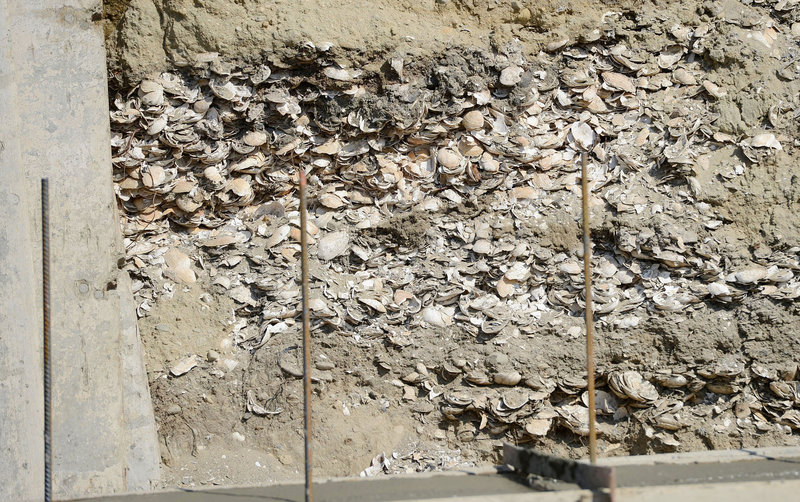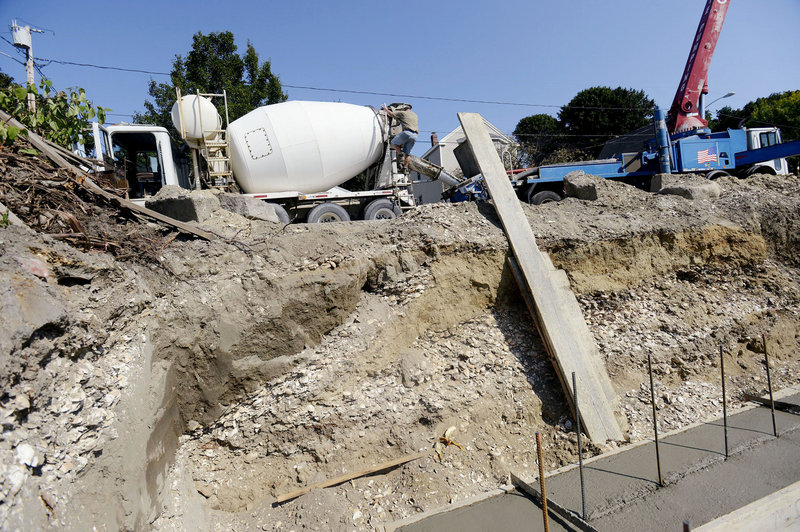PORTLAND – An archaeologist said clam and oyster shells uncovered at a Hammond Street construction site are almost certainly not a midden, or ancient garbage pit.
Nathan D. Hamilton, an associate professor of archeology at the University of Southern Maine, inspected the site Thursday and said he found historical artifacts mixed with the shells. But the artifacts aren’t ancient – they include pieces of a beer bottle dating to 1862.
Hamilton said that means the shells were most likely included in fill dumped on the hillside, which was once much closer to the Back Cove, rather than a midden left by Native Americans who used the site to harvest and eat shellfish centuries ago..
The shells were uncovered by workers building a foundation for an apartment building. The house that had stood on the site for about 100 years was torn down recently to make room for the new construction.
Christian MilNeil, a freelance writer who has a blog about urban wildlife and unusual features he finds in Portland, had speculated that the shells might have been a midden, or dumping ground used by Native Americans hundreds or thousands of years ago.
However, the state’s senior archaeologist, Arthur Spiess, said the fact that the shells were in layers, separated by marine clay, suggested that it was fill from Back Cove dumped on the site.
Send questions/comments to the editors.





Success. Please wait for the page to reload. If the page does not reload within 5 seconds, please refresh the page.
Enter your email and password to access comments.
Hi, to comment on stories you must . This profile is in addition to your subscription and website login.
Already have a commenting profile? .
Invalid username/password.
Please check your email to confirm and complete your registration.
Only subscribers are eligible to post comments. Please subscribe or login first for digital access. Here’s why.
Use the form below to reset your password. When you've submitted your account email, we will send an email with a reset code.